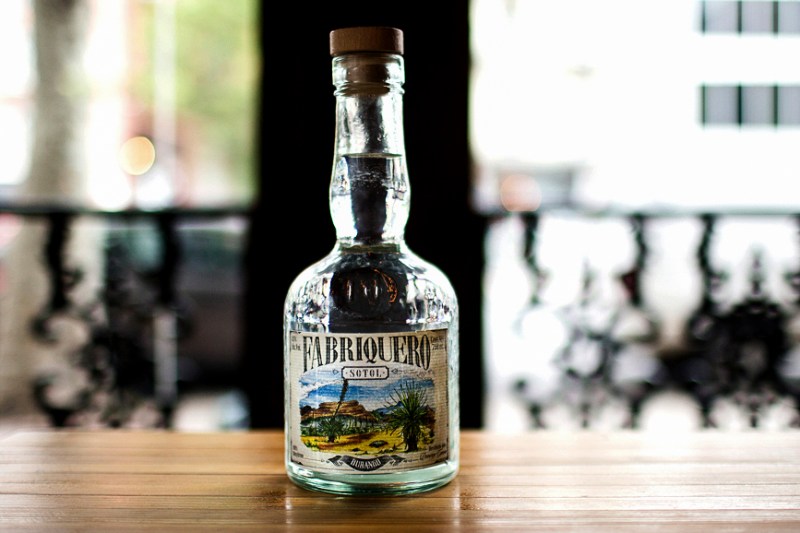
While agave spirits like tequila and mezcal continue to surge in popularity, that may not last forever. Due to sustainability issues — not to mention recent chatter about all the additives in many tequilas — a new player is almost surely going to enjoy some of the limelight. That player is sotol, sometimes known as sotol tequila, and thanks to a more regenerative growing process, this Mexican spirit is poised for a breakout.
It helps that sotol is delicious. While similar to tequila, it’s made from a different plant species. Tequila is made from agave, harvested whole, and ultimately replanted, a process that involves a roughly seven-year turnaround time. Sotol, on the other hand, is made from a wild and spiny evergreen plant that grows naturally in arid areas.

Why sotol is fantastic for sustainability
Obviously, there are sustainable tequila and mezcal producers out there. The key difference here is the approach. Agave tends to be planted, farmed, and processed like a conventional crop, whereas sotol is generally foraged for in natural areas. It’s an important distinction with water issues and drought likely only to persist, not only given the desert backdrop but the significant impacts of climate change.
Ryan Stock (no relation to this writer) is the CEO of Los Magos Sotol. He says his company only uses raw material in the production of its sotol, with no added sweeteners or yeast. They only harvest 40% of the sotol in a specific plot so as to not wipe out the crop and offer minimal human impact.
He estimates that sotol is about five times more sustainable than agave, given its perennial nature.
“Since we only utilize wild-grown sotol when creating our product — collaborating with ranches and other partners to keep the local environment thriving and safe from over-exploitation — there is no farming or abnormal agriculture practices taking place that will negatively impact the environment,” Stock says.
August Sebastiani is the proprietor at Quechol. His label’s sotol is grown in Durango, where it takes around 13 years for a plant to reach maturity. That slow growth rate leads to complex flavors and characteristics, he claims. He breaks down the sustainability factor as follows.
For one, the sotol plant is highly drought-resistant. He says that “unlike agave, which is often and increasingly cultivated in monoculture plantations, sotol predominantly grows wild including our own. This practice contributes to a lower environmental impact, as it avoids the use of harmful chemicals, fertilizers, and pesticides typically used in large-scale agriculture.”
The above portion of the plant is harvested to make the beverage while the root system stays intact, allowing the plant to regenerate. And then there’s the means of gathering the stuff.
“Sotol producers generally follow traditional harvesting methods, which are more labor-intensive but have a lower environmental impact,” he adds. “These methods also help preserve the cultural heritage of the communities involved in its production.”
No irrigation is required, and the biodiversity aspect is worth mentioning. It means the natural harmony at play in the given ecosystem stays intact, with no disruptions that would occur when taking water from a river for irrigation or fully removing a plant species that other plants and animals depend on. On top of that, at Quechol, all of the water used in the fermentation and distillation processes is recycled.

How sotol is exactly like your favorite wine
There’s a real terroir possibility with the spirit too. Because it grows in multiple regions, including parts of the American southwest, the drink has a chance to express exactly where it came from. That could be more peppery sotol from Chihuahua or grassier sotol from Arizona. Two offerings from the two brands in this piece prove as much, dramatically different in profile.
“It is this same influence that encourages many people to compare sotol to wine, considering the flavor profile of sotol can be drastically different from one area to another,” says Stock.
“Sotol plants are typically grown in limestone-rich soils, like the ones used to produce Quechol, producing more mineral and earthy characteristics,” Sebastiani says. He adds that there’s an important human quality tied to the terroir conversation as well. “Local traditions, techniques, and knowledge passed down through generations of sotol producers contribute to the spirit’s unique character. This includes aspects such as the methods of harvesting, cooking, fermenting, and distilling the sotol plants, as well as the type of stills used.”
Sotol is gaining momentum
That all said, sotol seems to have an exceedingly bright future.
“Sotol has all the elements that make a great spirit, one of which being the story behind sotol that stems from its rich history,” Stock says. “Sotol shares a great adjacency to the Mexican spirits category while currently being the only spirit that is not derived from agave, allowing it a strong differentiation from other Mexican spirits.”
Sustainable and culturally rich, sotol is a drink worth exploring. Given its flavor range depending on where and how it’s made, there’s an intriguing flexibility to the spirit too. According to Stock, “With such a bold flavor profile, bartenders and mixologists are finding that sotol is a much more versatile spirit than that of its agave counterparts, opening up the range in which it allows them to play around with it.”
Editors' Recommendations
- Find your partner in adventure: TINCUP and Jesse Palmer want you to rethink date night
- How to order a Martini like you know what you’re doing
- 5-ingredient recipes: You’ll love these simple chicken meals
- Canned cocktails bank on childhood nostalgia (and we’re here for it)
- How to pick the absolute best tequila, just by looking at the label



